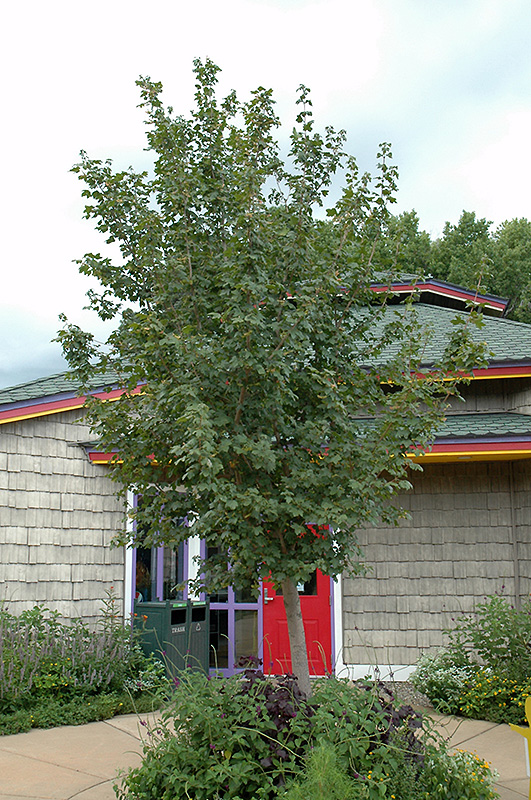Queen Elizabeth™ Maple
Acer campestre 'Evelyn'
Height: 35 feet
Spread: 30 feet
Sunlight:
![]()
![]()
Hardiness Zone: 6a
Other Names: Hedge Maple, Field Maple
Description:
Tolerant of a wide range of conditions like the species, but more spire-like with uniform ascending branches; a good strong accent tree, especially for formal landscapes
Ornamental Features
Queen Elizabeth™ Maple is primarily valued in the landscape for its decidedly oval form. It has dark green deciduous foliage. The lobed leaves turn yellow in fall.
Landscape Attributes
Queen Elizabeth™ Maple is a dense deciduous tree with a shapely oval form. Its average texture blends into the landscape, but can be balanced by one or two finer or coarser trees or shrubs for an effective composition.
This is a relatively low maintenance tree, and should only be pruned in summer after the leaves have fully developed, as it may 'bleed' sap if pruned in late winter or early spring. It has no significant negative characteristics.
Queen Elizabeth™ Maple is recommended for the following landscape applications;
- Accent
- Hedges/Screening
- Windbreaks and Shelterbelts
Planting & Growing
Queen Elizabeth™ Maple will grow to be about 35 feet tall at maturity, with a spread of 30 feet. It has a low canopy with a typical clearance of 4 feet from the ground, and should not be planted underneath power lines. It grows at a medium rate, and under ideal conditions can be expected to live for 80 years or more.
This tree does best in full sun to partial shade. It is very adaptable to both dry and moist locations, and should do just fine under average home landscape conditions. It is not particular as to soil type, but has a definite preference for alkaline soils. It is highly tolerant of urban pollution and will even thrive in inner city environments. This is a selected variety of a species not originally from North America.







